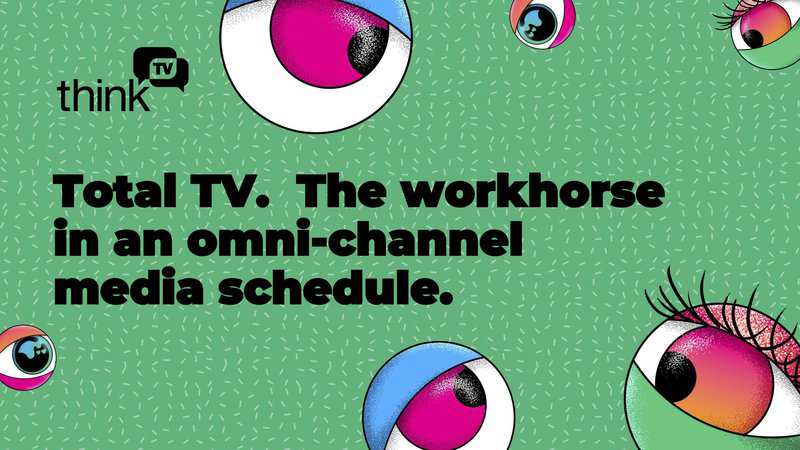As economic headwinds continue to blow toward 2023, advertisers are looking for evidence to show CEOs and boards why they should resist the urge to focus only on short-term media.
While performance media may look cheaper than broad-reach channels such as TV, research highlights that these channels do most of the heavy lifting and are therefore vital within the media mix.
Speaking to Mediaweek, ThinkTV’s director of research Steve Weaver explained: “Some media channels are really good at generating demand. They tend to be the broad-reaching media channels. And other platforms are quite good at converting demand.”
With advertising spend expected to contract in the coming year, Weaver warned against substituting broad-reach platforms for performance channels without taking into consideration where they sit in the marketing funnel.
Weaver said: “We often hear arguments about the best advertising platforms. However, when considering effectiveness, the role they play in the marketing funnel also needs to be taken into account.
“Within the broader media mix, some channels do more work than others. Because television is a very effective platform, it does most of the heavy lifting.
“Search, for example, might be amazing, but if you put all your investment in the search basket, you are going to struggle to get the same effect if you had a more balanced media plan.
“TV really is the workhorse that allows other media to do its job.”
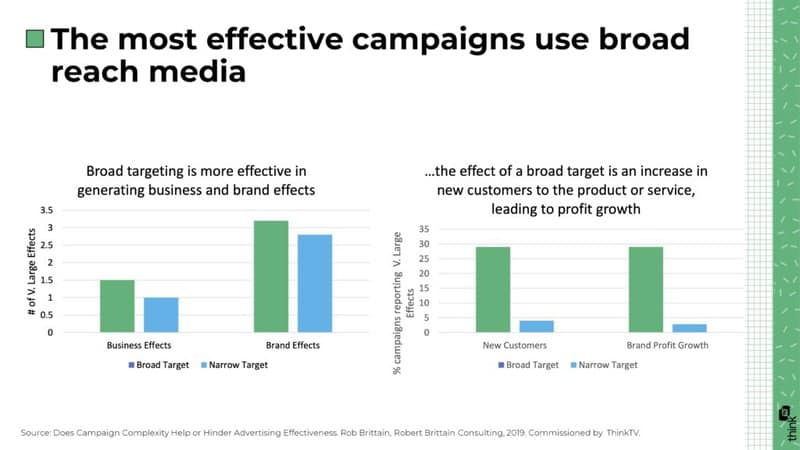
Weaver shared findings from advertising effectiveness expert Rob Brittain who has worked with data from the Advertising Council of Australia’s Effectiveness Database. The analysis shows that campaigns including TV have increased in effectiveness over time.
“The data demonstrates that advertising will pull the levers on both branding and business impacts. Within that, TV was the most common channel used.
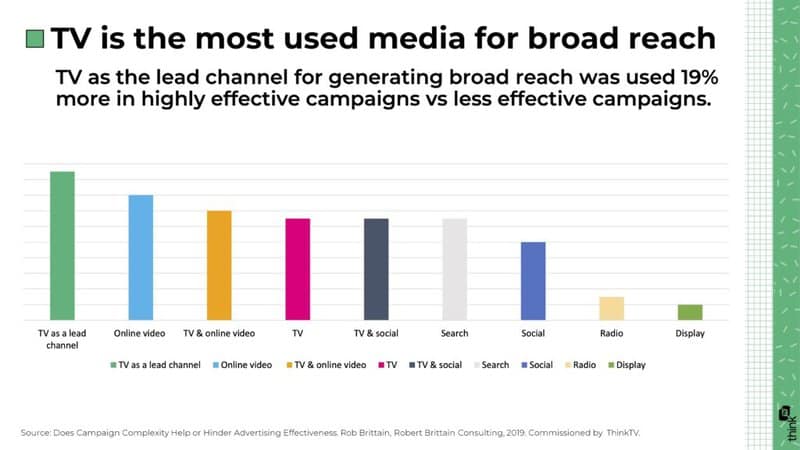
“As media gets more and more fragmented TV is the remaining place where you can get a 1m+ audience in a single minute. Where TV is used, the campaign has a much stronger performance.
“The quicker you can get the message out there to everyone, the quicker the demand for your product or service is likely to convert to a sale. Speed of reach is an important consideration.
“When you compare TV campaigns versus non-TV campaigns, you see increased brand profit for those using TV. There is also a corresponding improvement in market share growth.”
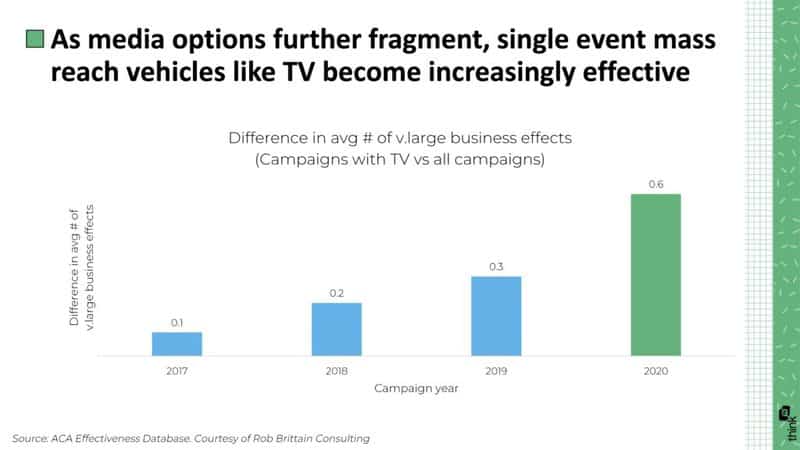
In terms of ROI, for media-driven sales volume, multimedia platforms are better performers.
“One of the key things that gets missed when people report ROI, it is a metric that focuses on media efficiency. It doesn’t look at how much of a particular product a media can move.
“TV can move a lot of product which is why big and emerging brands want to get on TV.”
Weaver: “The reasoning as to why multichannel campaigns work so well is that they avoid the diminishing returns problem. A single channel is ultimately going to tap out in its ability to drive a return.
“But with a broad-reaching platform like television, there is much more headroom to drive a return. When you go to a second media platform you are continuing to reach new buyers, drive more awareness and convert more sales.”
The data pack also includes results from ThinkTV’s Beyond ROI research this year that shows how TV has the best synergies with other media channels.

A key chart in the presentation illustrates how dollar-for-dollar, TV contributes more to media-driven sales.
“Out of home is second best, but it is literally just a third of the size,” said Weaver. Next best contributors are search and radio and then digital display.
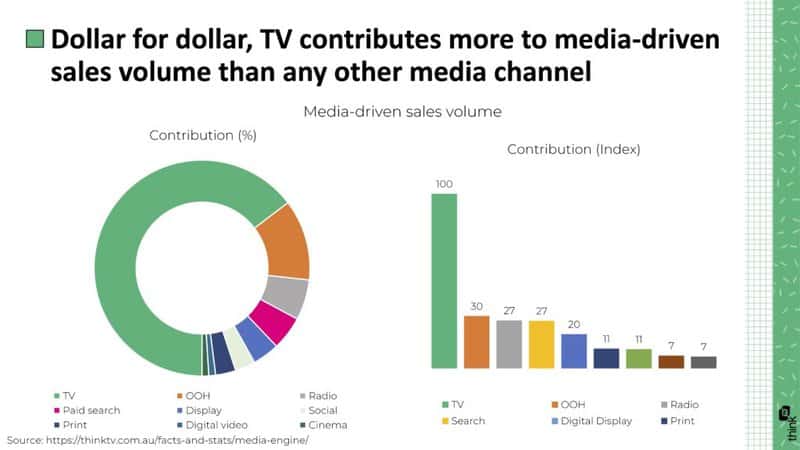
Key advertiser takeaways
• Campaigns that use TV are increasingly able to generate greater levels of customer acquisition, brand profit and market share growth.
• Dollar for dollar, TV delivers more media-driven sales growth than any other platform.
• TV creates strong synergies with other platforms and without it in the mix, the effectiveness levels of those other platforms suffer.
• A single-channel strategy leaves money on the table.
Download the full report here.
